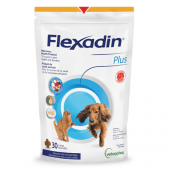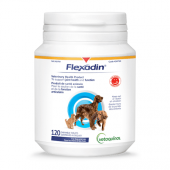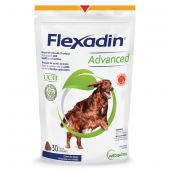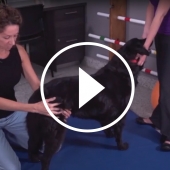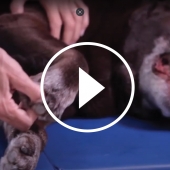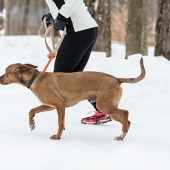Lying on your stomach on a comfortable surface, you experience a few minutes of total relaxation. The tension and aches of your muscles are replaced with feelings of peace and quiet. What if you could offer this incredible feeling of well-being to your furry friend? A gentle at-home massage is easy to give and can be a great way of bonding with your pet.
Arthritis, pain from injury and other conditions
If your pet suffers from arthritis, is recovering from an injury or has any other medical condition, check with your veterinarian first before giving massages. They may recommend specific techniques to help with pain management and speed up natural recovery, or advise against certain movements that could worsen the animal’s condition. Vigorous massages can be similar to physiotherapy, and sessions should therefore be limited to once or twice per week in order to allow muscles sufficient time to recover.
How pets can benefit from massage therapy
Little scientific research exists on the benefits of massage therapy for pets, however many veterinarians support it. The blood circulation and nervous systems in cats and dogs are similar to that of humans, and the same benefits can be expected. Regular massages can help strengthen muscle tone, flexibility and lymphatic circulation, and with proper veterinary guidance, help improve arthritis, joint pain, injury or inflammation.
The right time and the right environment
Whenever possible, choose a time when your cat or dog is already calm, and not right after an exciting play session. Find a quiet room and place a towel or yoga mat on the floor, so both you and your pet can be comfortable. Invite your cat or dog and let them decide what position feels most comfortable to them, whether it’s lying down, sitting or standing.
How to give your dog or cat a massage
Begin with a gentle touch and apply pressure depending on your pet’s response. Cats typically prefer softer movements, while larger dogs may enjoy more vigorous motions.
- Start with slow strokes along the length of your pet’s body.
- Massage the cheeks or muzzle, head, neck and ears using soft, circular motions.
- If your pet is receptive, gently squeeze their legs and paws, being careful to apply less pressure around bony areas and the back of thighs.
- Encourage your pet to remain calm using a soothing, gentle voice.
- Consider incorporating brushing or grooming your pet as part of their massage session.
Pay attention to your pet’s reaction: if they seem sleepy, start drooling or exhale slowly, they’re enjoying the experience! A light massage using the above technique can be given as often as needed, and offers a fantastic way to show your pet they’re loved.
A massage to relieve pet anxiety
Events like thunderstorms, the arrival of a new baby or moving into a new home can all cause anxiety in cats and dogs. By decreasing blood pressure, relieving tension and calming the nervous system, massage therapy can help the animal feel more relaxed.

